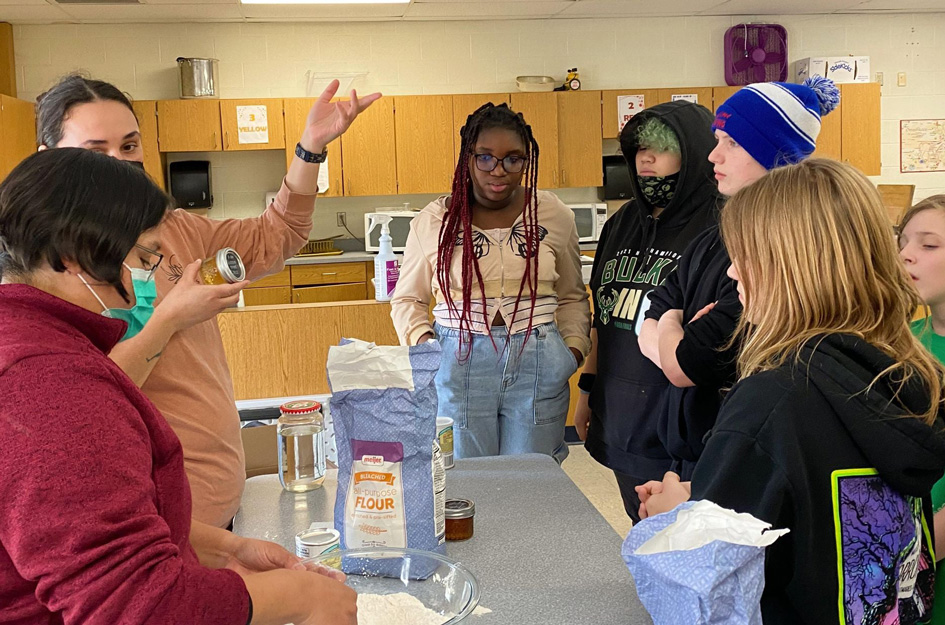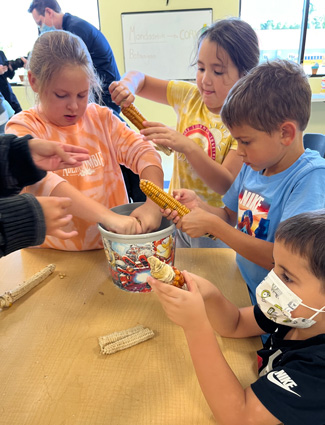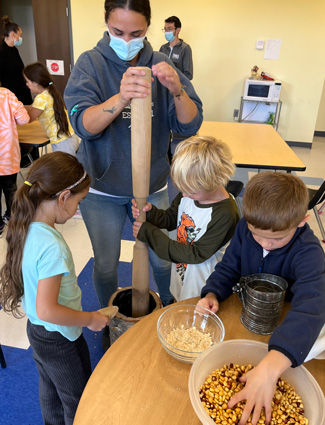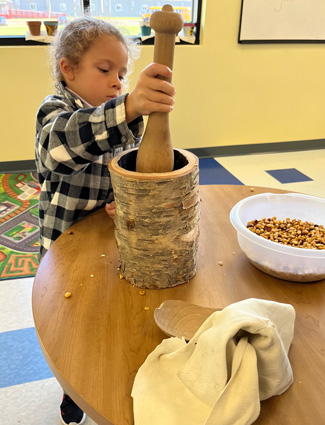
How to Make Cornmeal: Native Club Kids Share Recipe + Tradition
Food is deeply important to Native communities – its growth, preparation and how it’s shared as a communal experience. At Boys & Girls Clubs on Native Lands across the country, thousands of Indigenous youth learn Tribal traditions in food preparation so that they can pass on these techniques and recipes for generations to come. Thanks to the Boys & Girls Club of Bay Mills, today we’re sharing that preparation with you.
As we celebrate Native American Heritage Month and consider how we can honor Native people at our Thanksgiving tables, learn how the Anishinaabeg people make their own cornmeal to bake cornbread that is homemade in every sense of the word.
The Importance of Food in Native Culture and Tradition
The processing of corn spans generations across all Native American communities, and it is important to Indigenous peoples to pass their cultural traditions on to young people so they continue to live on.
Agricultural practices and food sciences have always been critical to the Anishinaabeg people of the Bay Mills community in the Upper Peninsula of Michigan, and these processes have been passed down and refined through centuries. For this community, food is deeply embedded in heritage.
So how does corn become cornbread? Recently, Boys & Girls Club of Bay Mills demonstrated a hands-on activity with their youngest members to teach them how to process corn into meal to make cornbread. They started from the very beginning, harvesting fresh corn from a local garden, and ultimately enjoyed the fruits of their labor with fresh-baked bread served with locally harvested honey.
See below for the steps to recreate this tradition with the loved ones in your life.
Homemade Cornmeal Recipe: Turning Corn into Cornmeal
 Kids pulling kernels off dried corn cobs into a bucket
Kids pulling kernels off dried corn cobs into a bucketSTEP 1: Harvest fresh corn from your garden (or purchase from your local market or grocery store). Corn must be thoroughly dried out before processing can take place. Simple steps for drying below:
- Remove husks and silks
- Blanch corn cobs in uncovered, boiling water for 2-5 minutes
- Immediately transfer boiled corn cobs into ice water for 3-5 minutes (fully submerged)
- Dry each corn cob and place evenly on a baking sheet
- Place baking sheets with corn cobs in oven at 140° F with oven door ajar about 5 inches
- Leave corn cobs in for 8 hours, rotating each cob halfway through; repeat this step until corn is thoroughly dry and brittle – could take three or four 8-hour sessions to complete this process
 Youth and teacher using their botaagan to grind corn kernels
Youth and teacher using their botaagan to grind corn kernelsSTEP 2: Once corn is dried, it’s time to make cornmeal by grinding it. For Boys & Girls Club of Bay Mills youth, that means peeling or rubbing the kernels from the cob and putting them into the botaagan for grinding. A large mortar and pestle will work as an alternative to a botaagan.
A piece of leather is often draped over the opening of the botaagan to prevent the kernels from jumping out while being pounded by a pestle. Continue using the pestle until the corn is broken down into a grit and begins looking like flour.
 Young girl using smaller botaagan herself
Young girl using smaller botaagan herselfSTEP 3: Once the kernels are broken down more into a course powder, sift it to separate the small chunks and place the large remaining ones back into the botaagan/mortar and pestle to continue processing all the pieces until they are powder.
STEP 4: Once all the kernels have been pounded down, your cornmeal is ready! Store it in a sealed container in a dry, cool space. Homemade cornmeal can be used in any cornbread recipe that requires cornmeal as an ingredient or simply by adding to boiling water, you can make a corn mush, also for any number of recipes.
 Youth around table with freshly baked cornbread
Youth around table with freshly baked cornbreadSTEP 5: Enjoy your cornbread! The kids from Boys & Girls Club of Bay Mills sure did.
Boys & Girls Clubs of America has served Native youth for 30 years as the largest Native youth service provider in the nation. Native Clubs prioritize the well-being of youth, families, communities and staff through cultural learning, life-enhancing programs and mentorship that fosters resiliency for Native young people and meets the needs of the community.
Clubs on Native lands access resources and programming thanks to national partners likes the Walmart Foundation. With the Walmart Foundation’s support, Native Clubs and communities have access to meals and snacks, as well as Native-adapted national Boys & Girls Club programs that reflect each unique Tribal community and uphold cultural traditions.